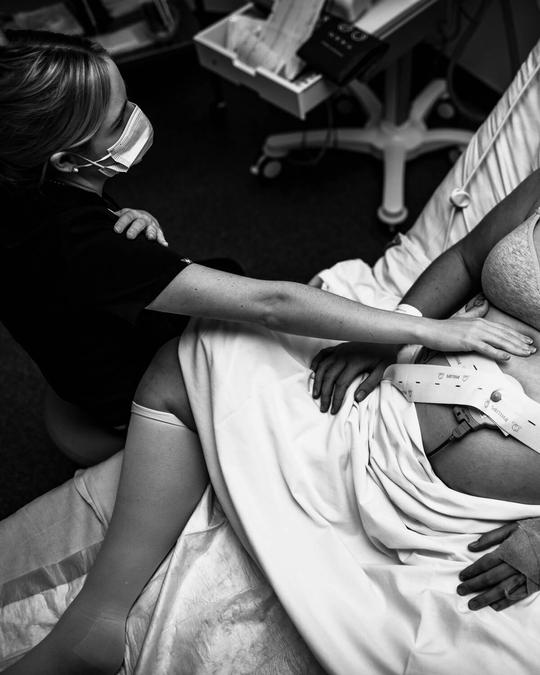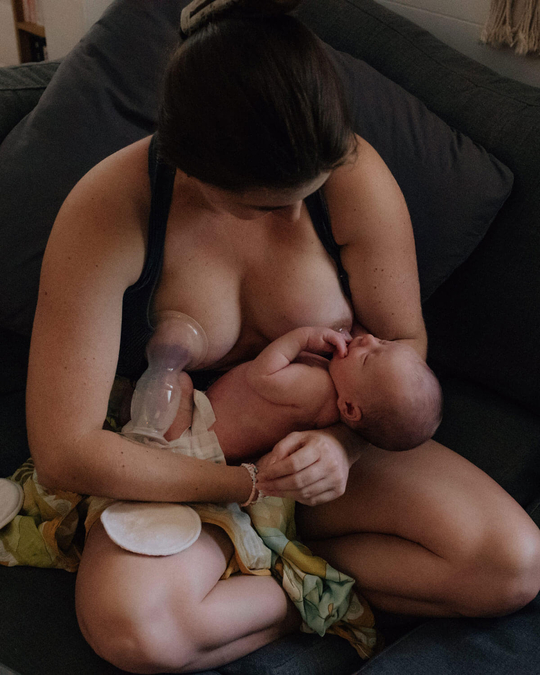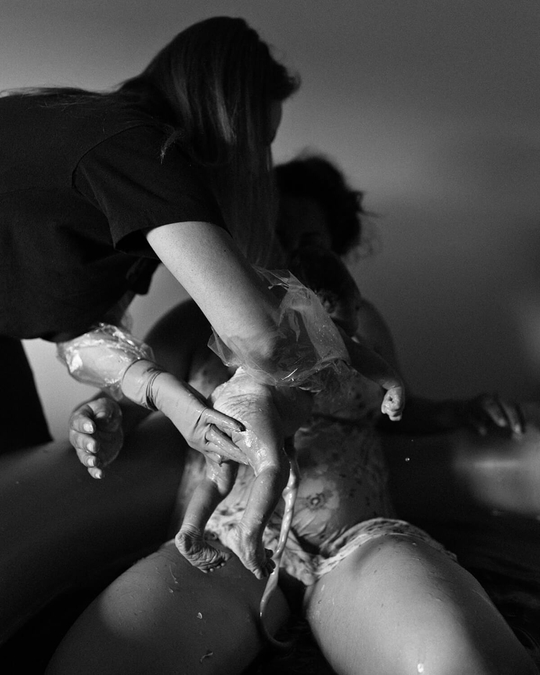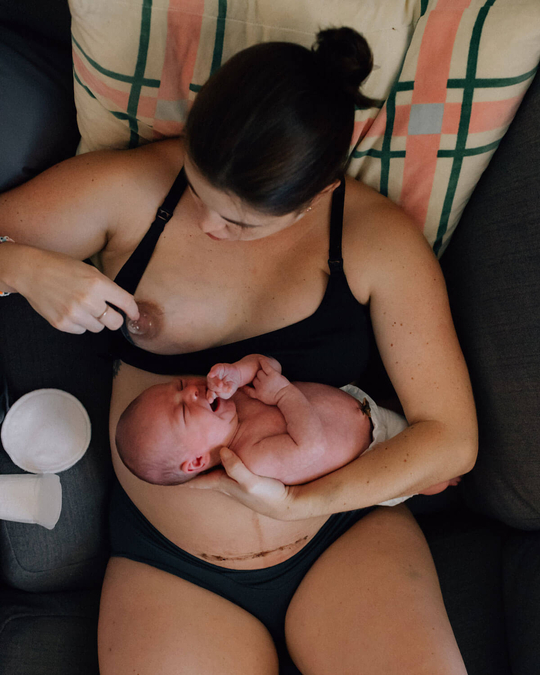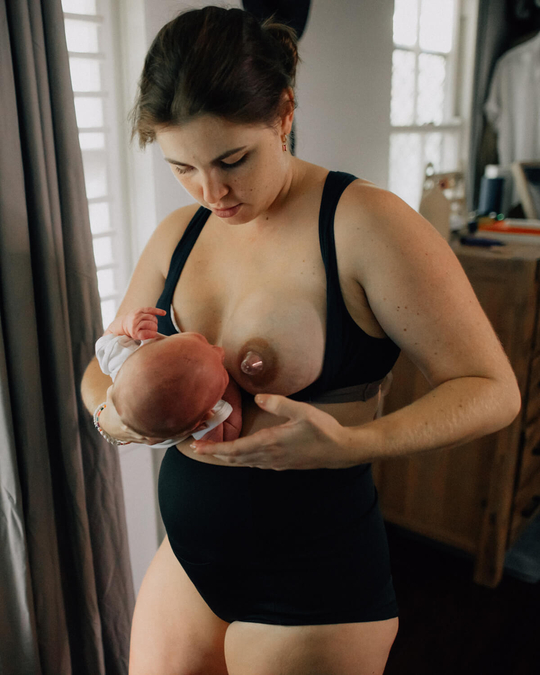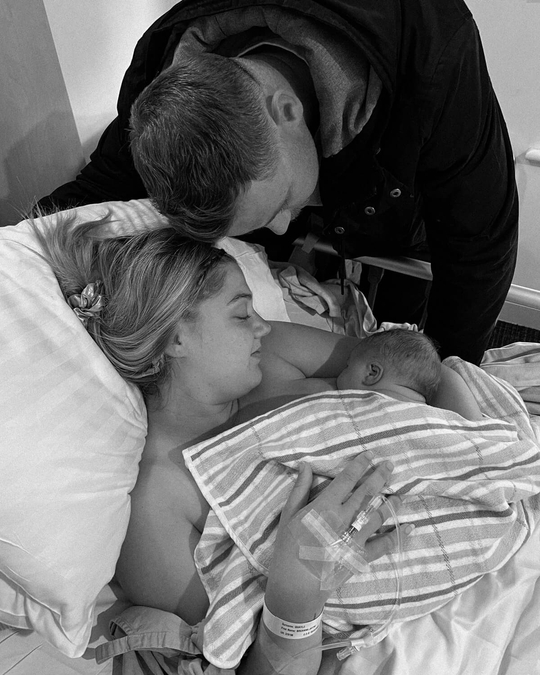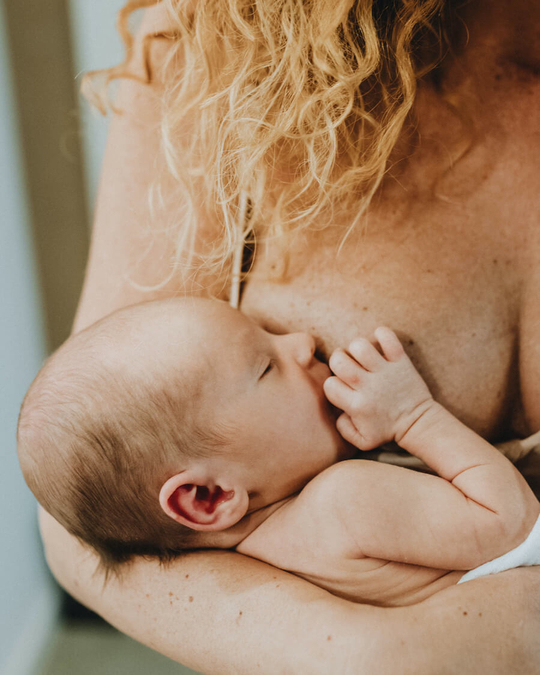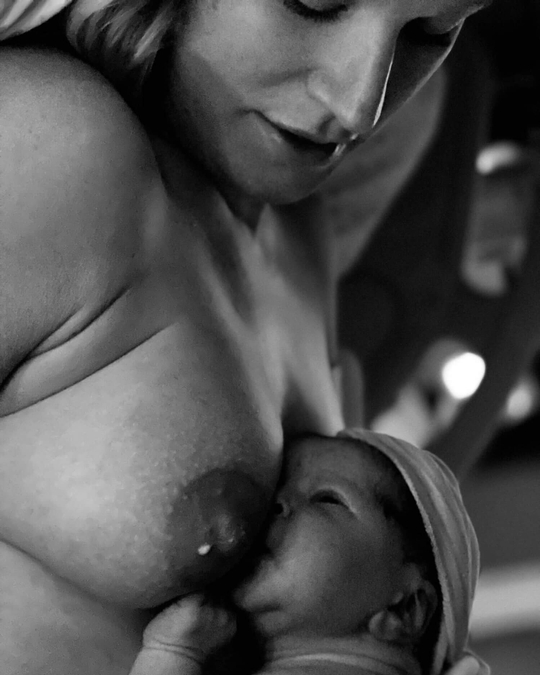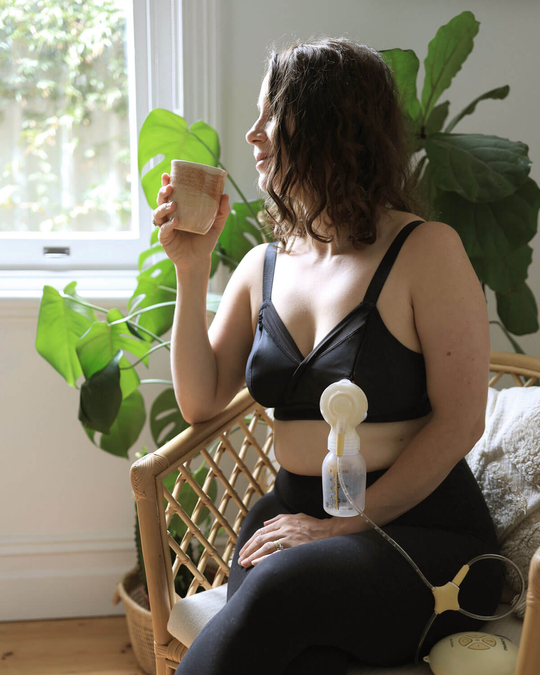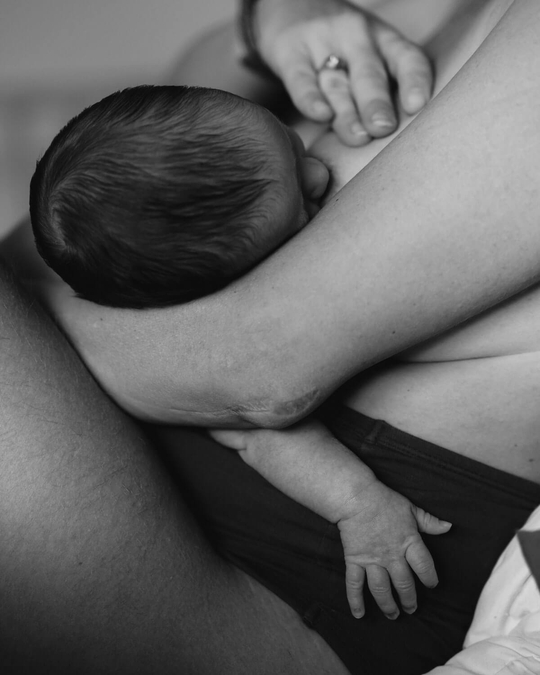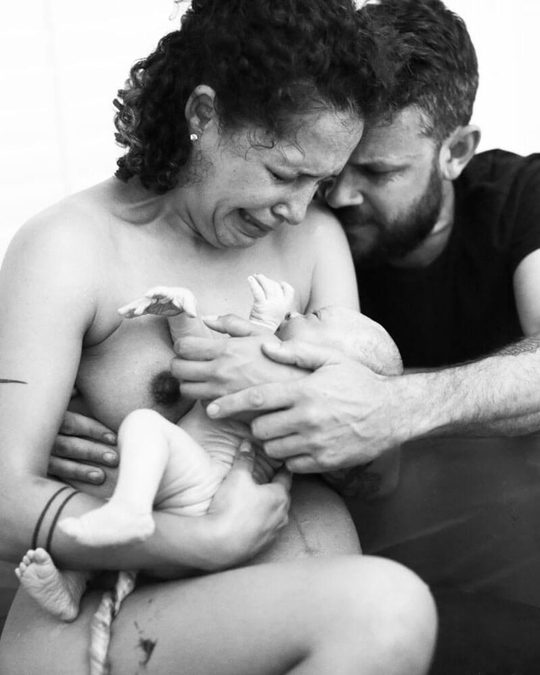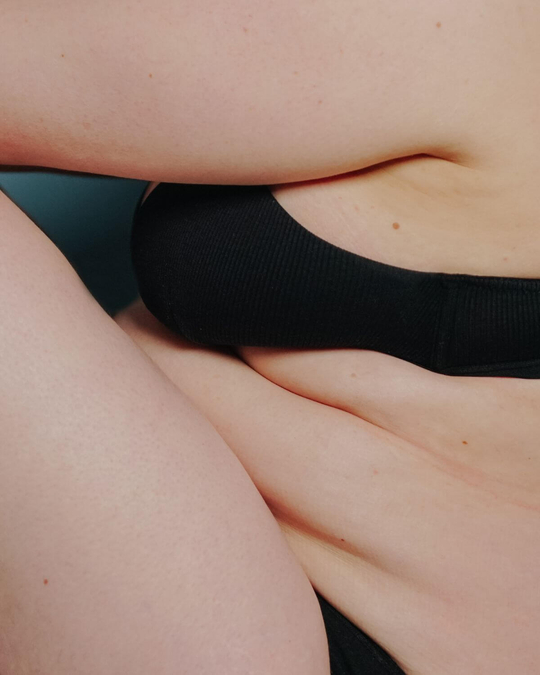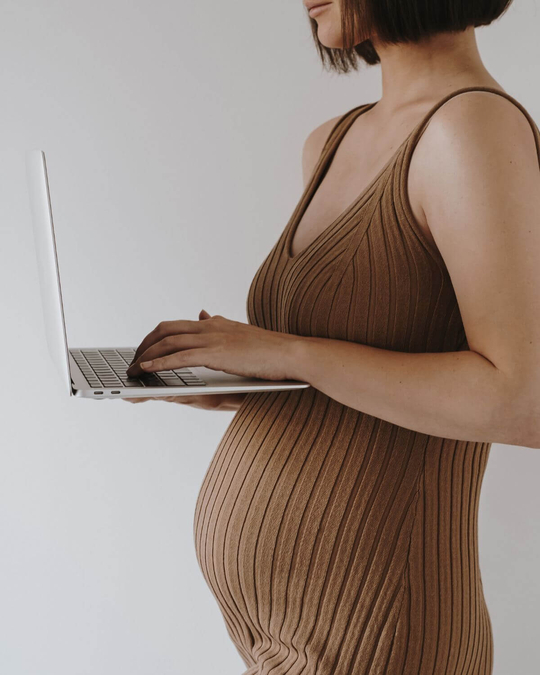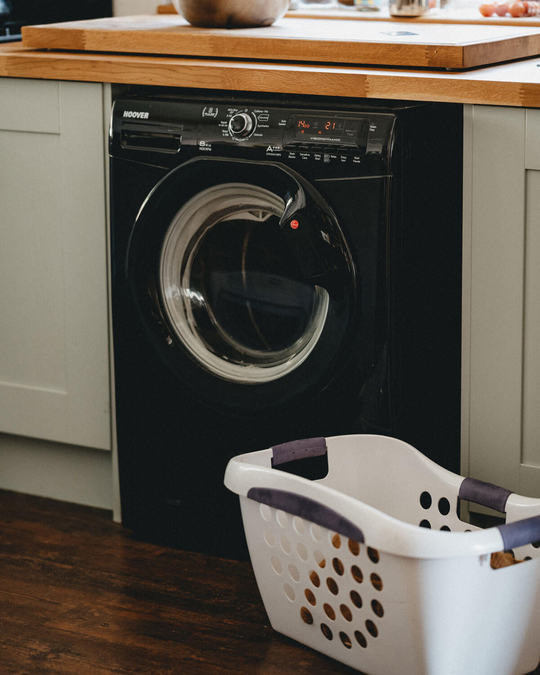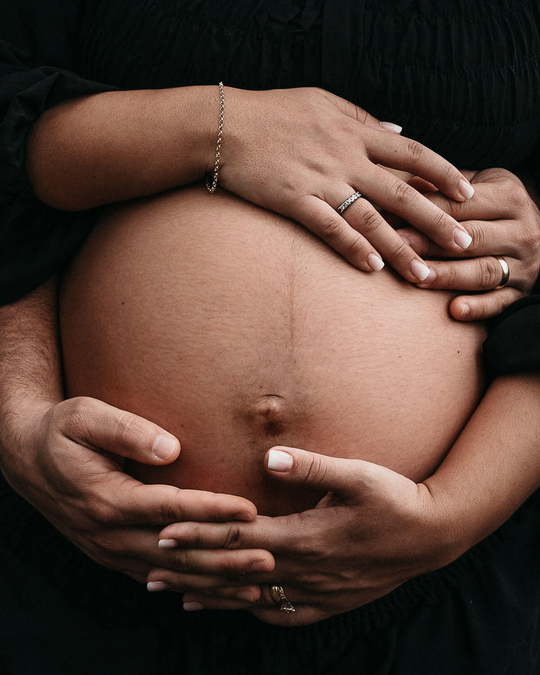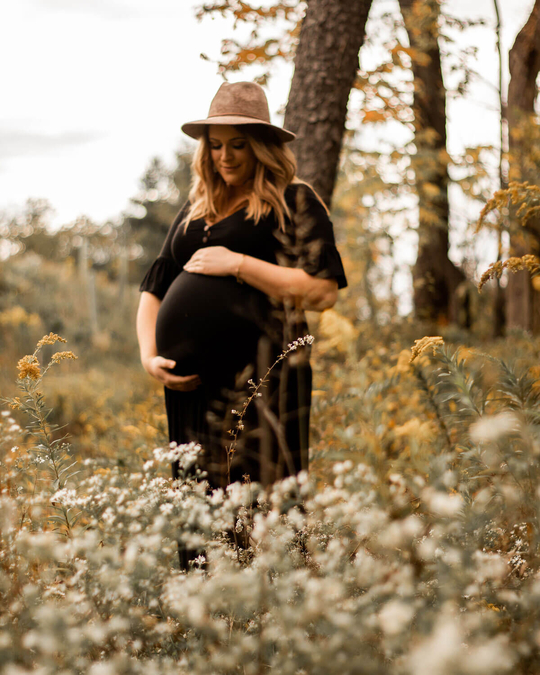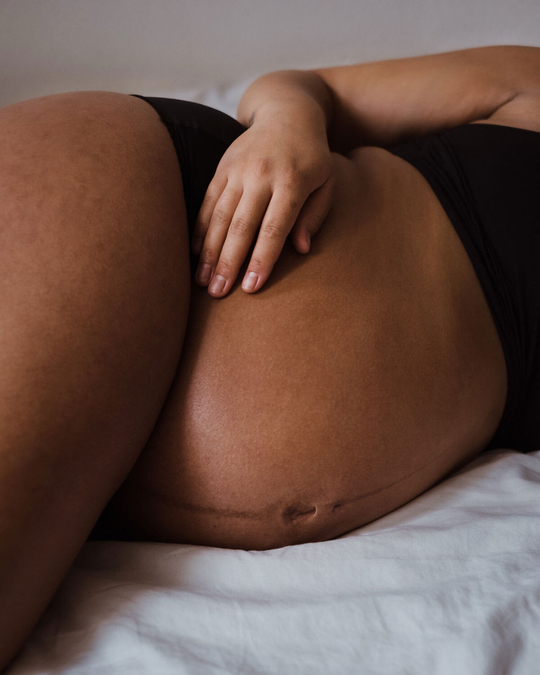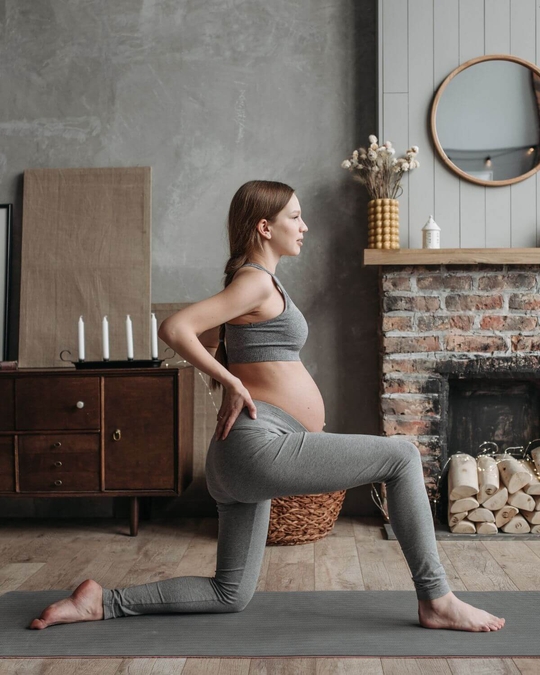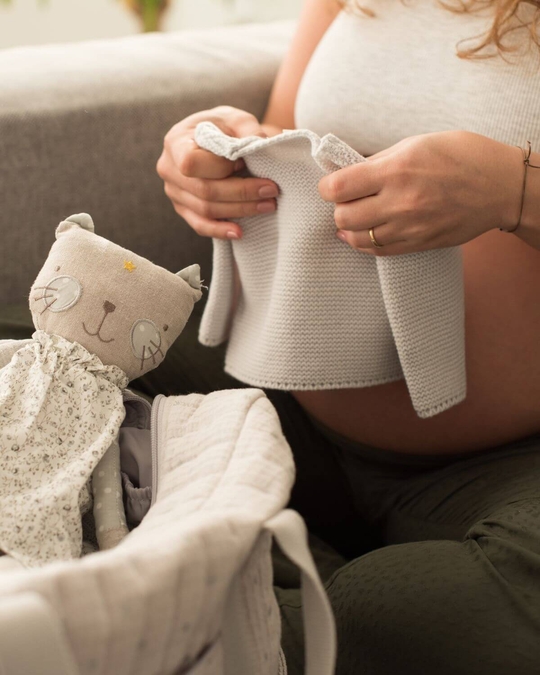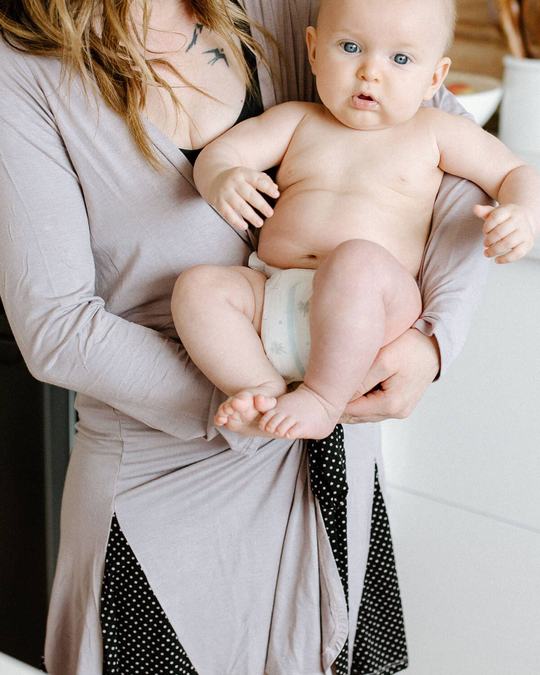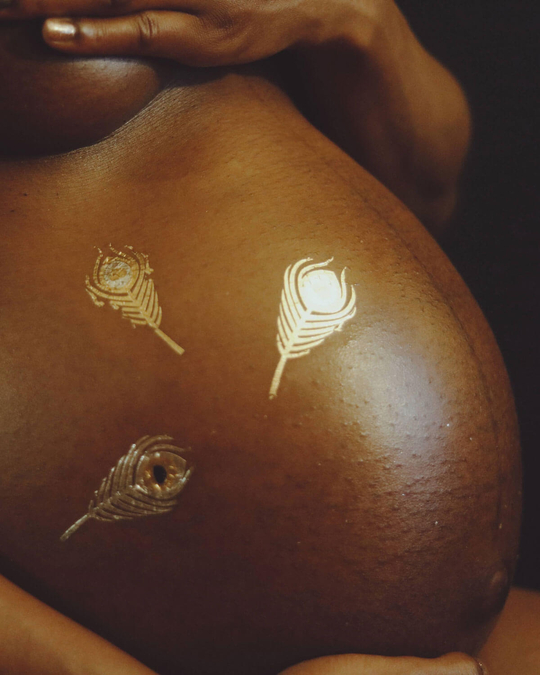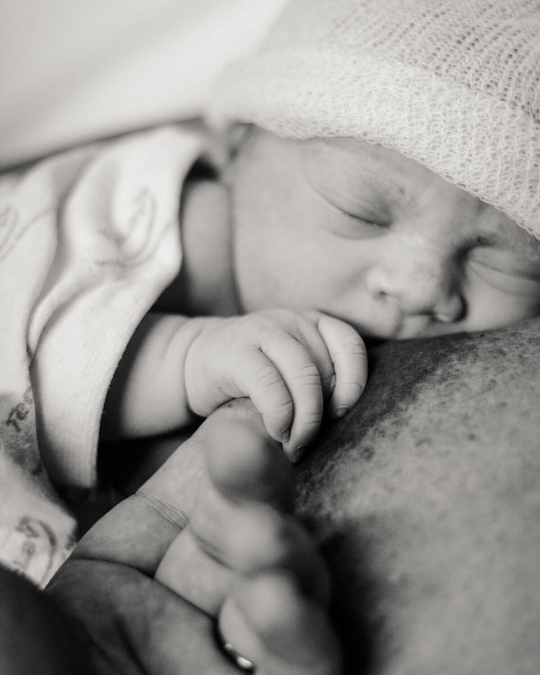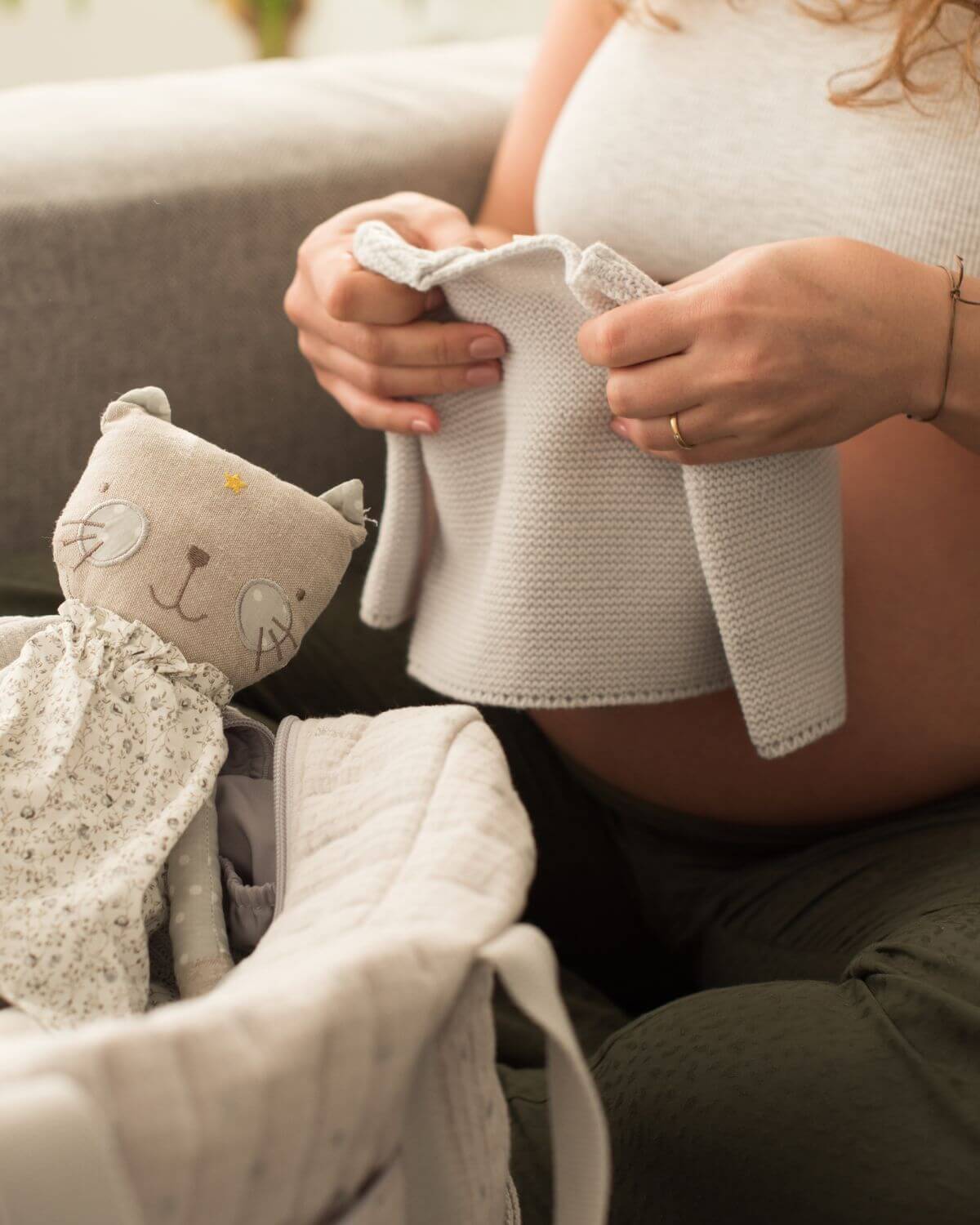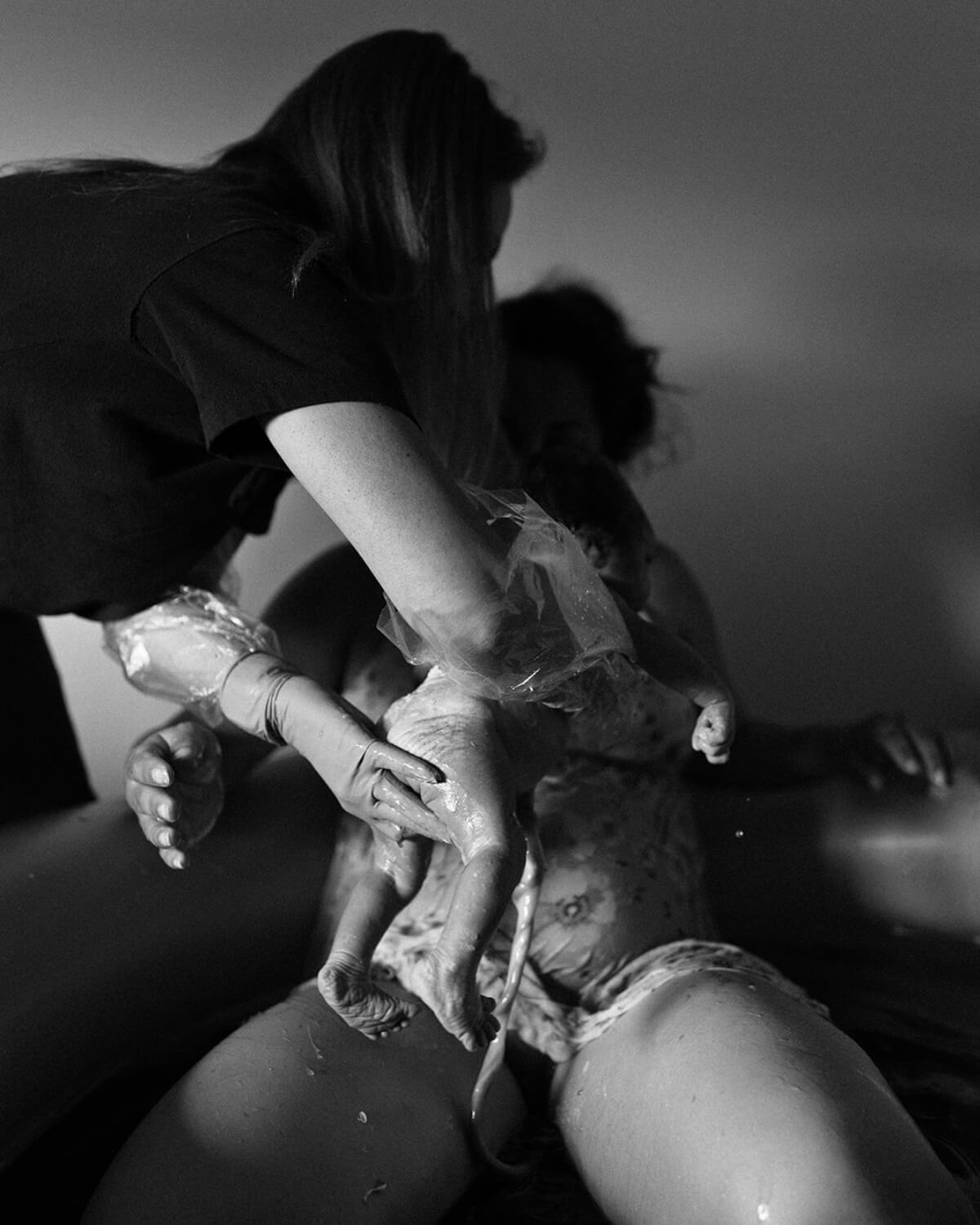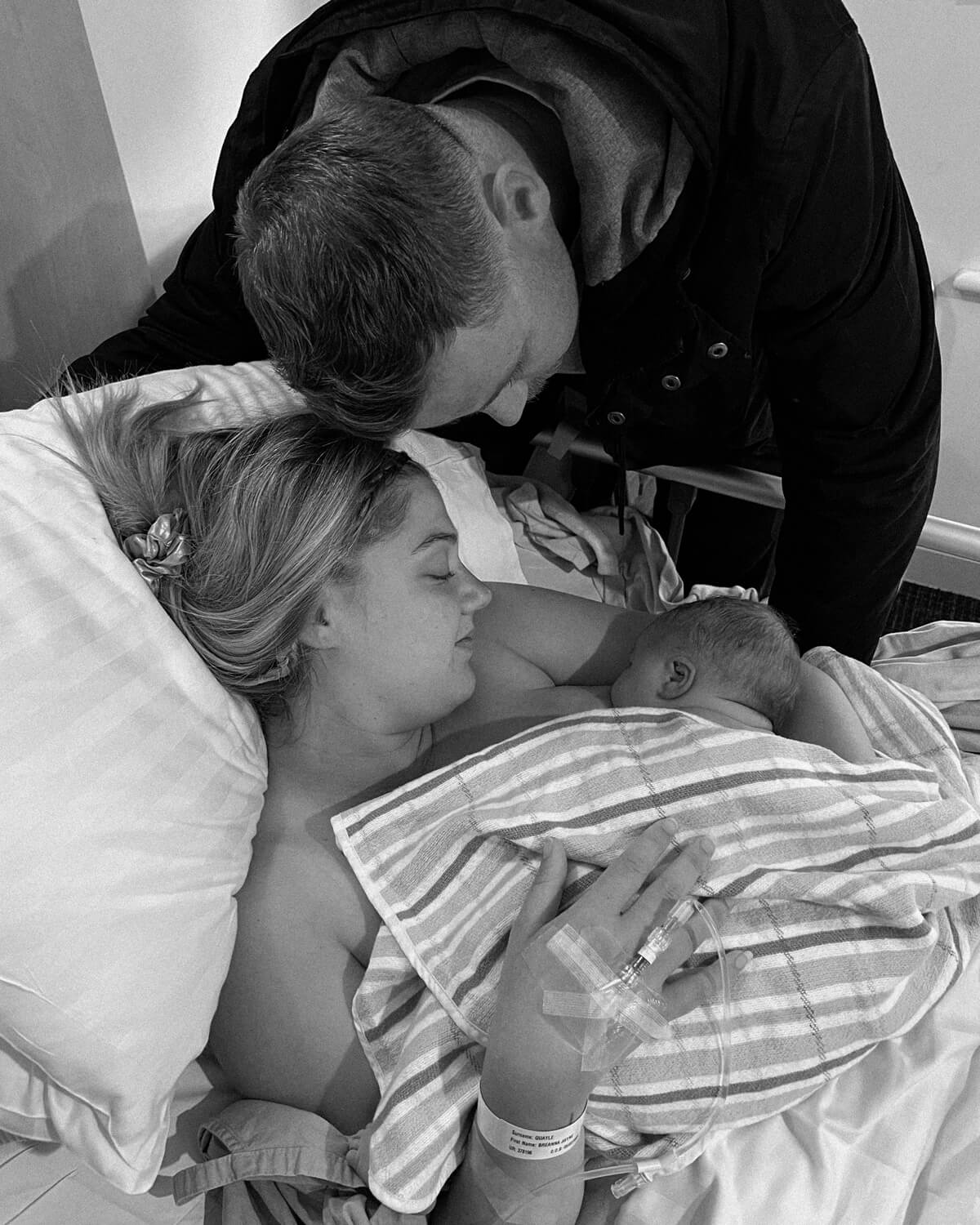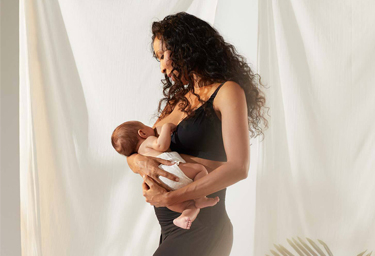It is important to remember that everybody’s experiences of labour are different; in the same way that everybody’s pregnancy is different. I’ve got 2 children and each labour signals, labouring and births were completely different.
For my first daughter, the contractions came on at night and I had to have my waters broken at the end of labour. Then for my second daughter, it was only when daughter number one giggled “mummy’s doing a wee” that I noticed my waters had broken 8 weeks early.
What is labour?
Labour is the first sign that you’re about to birth your baby. It consists of a series of continuous, progressive contractions of the uterus that help the cervix dilate and thin out. This allows the foetus, placenta and membranes to move through the birth canal.
When does labour start?
The exact trigger for your labour to start is one of those lovely unknowns. Basically, it is when your baby is ready to come out, but even this can be debated for premature babies and for those stubbornly comfortable ones.
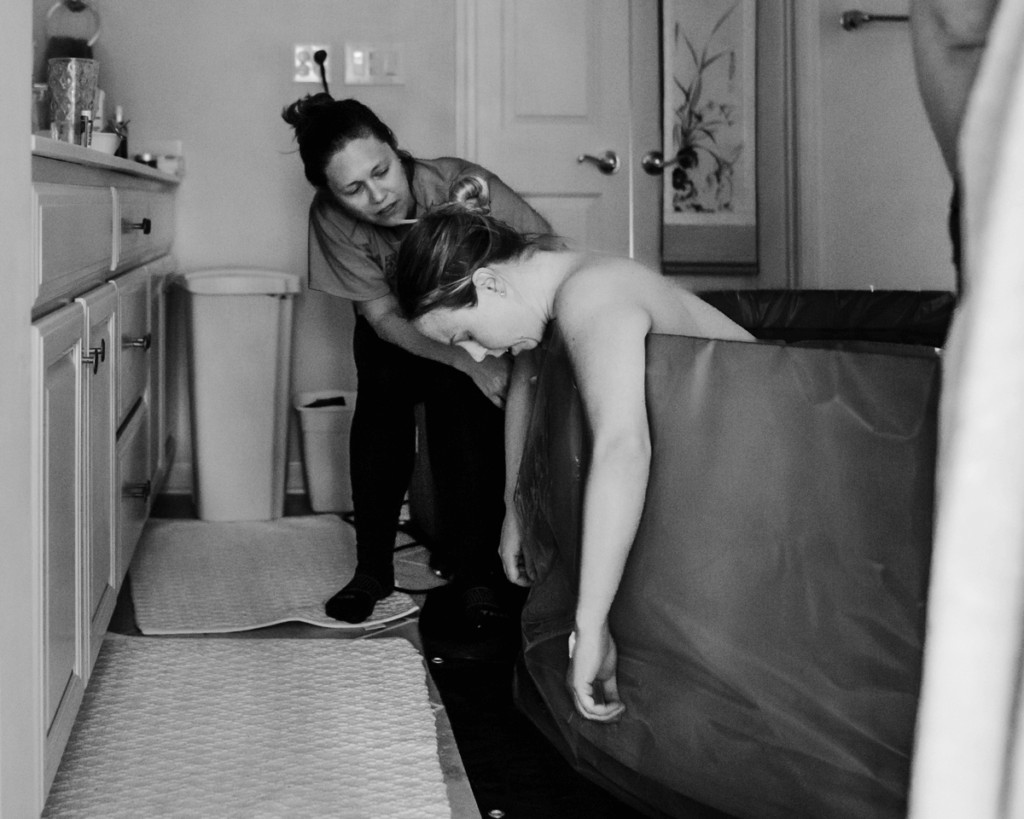
Ways to prepare for labour
Not only should you prepare logistically with transport, support people and snacks, but there are ways to prepare mentally, physically and emotionally. The people around you will also need to prepare for the journey.
- Pack a bag
If a bag is packed and ready to go, then there’s one less thing to think about. - Have your birth clothing sorted
Make sure you’ve packed a comfortable seamless nursing bra and bonus points for one that opens up at the front for immediate skin-to-skin. What’s the weather like and where will you be labouring. Be prepared to labour in the middle of the day with plenty of ice cubes if it’s summer where you are, or in the middle of winter with lots of firewood to-boot. Will you be having a water birth? Are you comfortable with everyone seeing you naked? During labour, most women’s inhibitions go out the window (by the way). - Perineal massage
A great way to prepare your perineum for stretching and to avoid tearing. - Write your birth plan
A birth plan is a good way to get your mind ready and to go through the motions of what you want and don’t want. Be realistic though. If you’re realistic about the expectations, you’re less likely to be disappointed. You can have a few different scenarios in there to cover most bases but, at the end of the day, the health of you and your baby is what all health care providers have on the top of the list of their birth plan for you.
You might also like: The Thing About Birth Plans…
- Move your body
There are so many different factors that can determine the length of one’s labour, and one of these is movement. If you live your life on the lounge, then get ready for a long labour. The fitter you are and the more you move, the easier and shorter your labour is going to be. Go for a walk or swim, do some yoga, vacuum the house… Just keep on moving. - Understand the pain
It may sound weird, but when you understand that the pain is actually a good thing and will help you through your labour and birth, you welcome it and work with the contractions rather than dread them. It’s a mindset.
Signs and symptoms of labour
Your body will start to prepare for labour approximately 1-2 weeks before you are due to give birth.
- Braxton Hicks Contractions
These are small contractions that can be described as menstrual type cramps. They occur when the cervix starts to thin and widen in preparation for labour. Some women may even begin to dilate up to 1cm during this time. - Baby will drop
You will notice closer to your due date that the baby is no longer sitting high up under your rib cage. They will drop lower into your pelvis ready for birthing. This will be a welcome relief for some, as breathing suddenly becomes a whole lot easier. Some women do hip swinging or walking. - Mucus plug
Some women may notice in the days leading up to the birth that they pass a small brownish coloured piece of mucus. This is called the ‘mucus plug’. Its job has been to plug the cervical canal for the past 9 months. It will dislodge itself when the cervix starts to contract. - Nesting
You may get a sudden burst of energy, which causes you to race around and nest in the lead up to the birth. Some women don’t want to leave the house and do as much as they can to ‘get organised’. - Diarrhoea
In the days leading up to labour your bowel is likely to open and empty, this can sometimes result in diarrhoea. This is nature’s way of making way for baby. It’s completely normal to have a bowel movement during labour, but please don’t take a laxative to ‘bring it on’ as the midwives are the ones that clean up the mess. - Shivering and or trembling
Some women will experience shivering and or trembling in the lead up to and/or after labour. There is no need to panic. This is just nature’s way of relieving your body of tension. It is advised to remain calm, as each bout will usually last only for a few minutes. A warm shower and or slow deep breathing may help to calm the body. - Looser feeling around the joints
Your body will release hormones, which helps to loosen up the ligaments in the body and open up the pelvis. - Weight gain stops
Most women will find that the stop gaining weight around the 1 week before they are due to give birth. - Experience cramps and back pain
Cramps and back pain is common. They are a result of your muscles and joints stretching and shifting in preparation for labour.
How do I know if I am having a ‘true labor’ or a ‘false labor’?
| True Labour | False Labour |
| It may start with what feels like menstrual cramps. | It may start with what feels like menstrual cramps. |
| These cramps will gradually increase in strength over a period of time. | Contractions are not consistent and may come and go. |
| True contractions will be regular. | Contractions do not worsen over time. |
| True contractions may be felt in your back and front of the abdomen. | Contractions are felt in the lower abdomen only. |
| A true contraction is intense pain and walking or talking through it will be difficult. | The pain is not extreme. |
| Your water breaks (this can occur at any time). | Waters do not break. |
What happens if your water breaks and you do not have contractions?
In the rare case that your water breaks and contractions do not follow, you may need to be induced depending on the development of your baby and progression of your pregnancy.
The amniotic fluid sac that the baby has been living in for the past 9 months has been their protective seal. Once the water breaks, baby is exposed to germs and possible infection, so it’s best to advise your health care provider immediately and take their advice. Failure to do so could be detrimental to you and your baby.
Can I be in labour and not know it?
It’s very rare that your body and actions do not line up and even more so when you’re about to birth. If you haven’t experienced any of the early warning signs, then yes, you can just go directly into contractions. I’ve heard of some women not knowing they were pregnant before going into labour, but not the other way around. If you’re educated and understand your body, there are many signals that will indicate that labour is about to start.

What is preterm labour?
This is when you go into labour before 37 weeks. Some babies just want to come out earlier. Personally, I wasn’t ready at 31 weeks and wish I had packed my hospital bag. I didn’t have any pre-signs of going into labour at this early stage. My belly was still only 6 months big, so I wasn’t looking for the signs either.
Doctors later told me the reason I went into preterm labour was due to ‘stress’, as this is one of those undetectable causes and can impact some more than others depending on their state of mind and body.
I was taken to hospital and stayed there with bedrest and on the third night started to feel my contractions. The funny thing was the contractions were not able to be ‘read’ by the hospital’s state of the art machines, and the nurses didn’t believe me that I was actually in labour. They believed me in about 5 hours time, though, when I met my daughter.
What happens if I don’t go into labour?
Babies can go 2 weeks over their due date but this all depends on when the due date is worked out to be, as this can also be 14 days out of tolerance. If you have concerns then speak to your health care professional and they may be able to schedule an induction.
Nature is the best way to birth your baby so try to do some things to bring on your labour such as:
- Moving and walking.
- Healthy eating and lots of fruit and vegetables plus plenty of water.
- Raspberry leaf tea.
- Make love (with the orgasms too please).
- Pat a dog.
- Go on a date.
- Get your oxytocin flowing.
- Relax.
- Mentally – make sure you’re ready to meet your baby.

When should you call your midwife or doctor?
- When your contractions are strong and consistent (get your partner to time them for length and consistency).
- If your water has broken. This can either come as a small trickle of water/amniotic fluid or as a gush.
- Trust your gut instinct. If you think something is not right – call.
- If baby is less active than normal.
- If you have any vaginal bleeding or unusual discharge.
- You feel unwell.
- Experiencing headaches.
- If your contractions start before 37 weeks. This is considered a premature birth.
- If you are experiencing blurred or double vision.
When should I go to the hospital?
It is advised to wait until you know for sure that you are in labour before going to the hospital, to avoid being told to go home.
Don’t be alarmed if your contractions slow down when you are on your way to the hospital and at hospital (it’s not like the movies) as labour usually occurs when you’re in your comfort zone. This is another reason why home births are becoming more popular.
Should you have any questions or concerns when at home, phone your midwife or doctor first for assurance. Be very clear about your progress and the symptoms you are experiencing for an accurate assessment.
If you are experiencing a normal labour with no apparent complications, it is generally recommended to go to the hospital when your contractions are 5 minutes apart for at least 1 hour. Each contraction should last for approximately 30-70 seconds each. These stats can vary depending on your health care professional’s advice and your personal situation, so best to check with your carer firstly.

Stages of Labour
First Stage: Dilation of Cervix to 10cm
The first stage is the longest and can last a few hours or even a couple of days. It’s recommended to stay at home for as long as possible during the first stage. This is for a couple of reasons:
- You’re more likely to dilate more quickly if you’re comfortable in surroundings that are known to you.
- Unless you have a medical condition that needs attention, there’s nothing the hospital or medical staff can do for you.
- You would just be taking the attention away from other mamas that are further along in their labour and birth.
Try to do the following during your first stage of labour:
- Drink small amounts of water.
- Eat snacks to keep your energy up.
- Rest between contractions.
- Walk/move your body.
- Move your hips in a rocking motion.
- Ask your partner to massage your back.
- Connect with your partner. Did you know that kissing and other acts of foreplay help to soften and open the cervix?
- Communicate your feelings.
The Transition
This is towards the end of the first stage (7cm–10cm dilation), your contractions will become closer together and longer in duration. The signs for this stage can be very different depending on the woman such as:
- Wanting to give up or thinking it’s all too hard.
- Denial (I’ve heard of women starting to pack their things and try to walk out the ward).
- Feeling super uncomfortable and restless.
- Anger towards their partner or staff.
- Wanting to (and trying to) sleep.
- Asking for pain relief.
- Starting to ‘bear down’.
- Making louder and more constant noises that can sound deep and bellowing. Did you know that making these sounds helps your cervix and vagina soften because they are connected via the vagus nerve – the largest nerve in the body?
- A shift of power and determination.
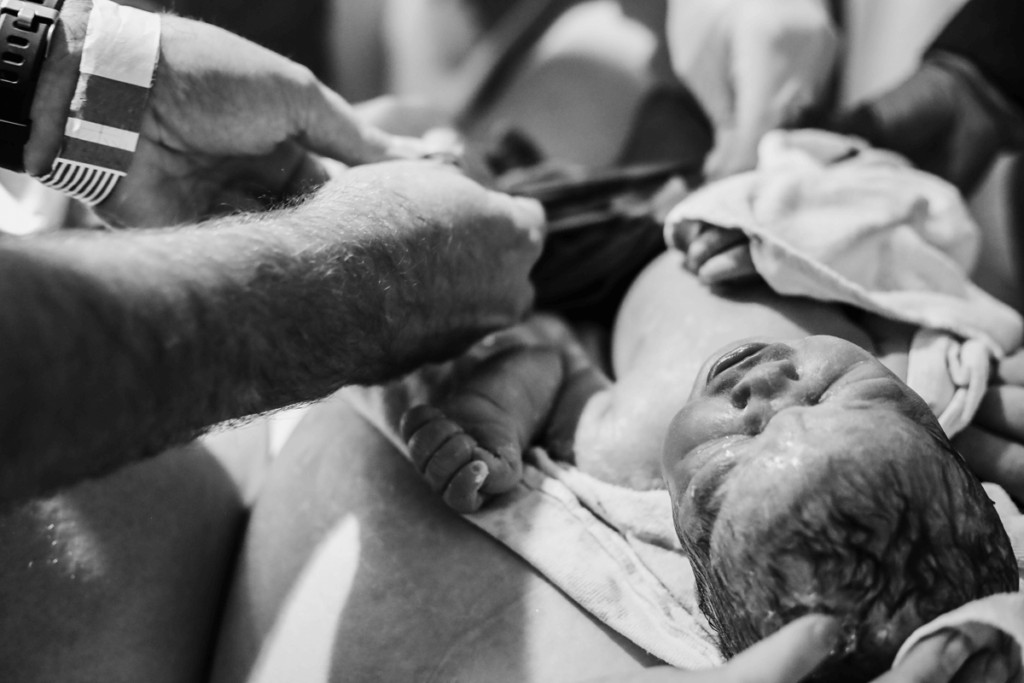
2nd Stage: The Birth of Your Baby
This stage is quite quick in the whole scheme of things and is the most exhausting for you and your baby. It can be longer for first time mums or if you’ve had an epidural. Symptoms include:
- Stretching and burning feeling in your perineum and vagina.
- Cramps, nausea and/or vomiting.
- Pressure in your bottom.
- Your contractions will usually last longer than the time you have between them, much like an F45 workout.
- The urge to push (I had the urge to push but didn’t think I was allowed, as I was waiting for instruction just like in the movies, from my midwife).
- Listen to your body and work together with the contractions as these will help you push.

3rd Stage: The Separation and Birth of the Placenta
Even though your baby is in your arms, your rodeo isn’t over yet. An additional injection of oxytocin in your leg can help you birth your placenta in up to 30 minutes. This helps it come away from the uterus wall. If your baby is immediately put on your chest for skin-to-skin and suckling, this can help you naturally produce oxytocin for contractions to birth your placenta without the injection. Symptoms include:
- Lengthening of the umbilical cord.
- Flattening of the top of the uterus.
- Urge to push.
- Gush of blood.
When you think about every baby’s different personality, looks, tempers and feelings, then you’ll realise that every birth and every labour can be completely different, also. It’s a bit like a ‘choose your own adventure’ when it comes to creating a new life and they let us know how unique everyone is at the point of conception, throughout your pregnancy and of course your birth and labour.
—
Disclaimer: Cake does not provide medical advice, diagnosis, or treatment. Any information published on this website or by this brand is not intended as a substitute for medical advice, and you should not take any action before consulting with a healthcare professional.
LIKE WHAT YOU READ?
Join CakeMama Club & get 10% OFF your first order!
Plus you’ll get tips + tricks for pregnancy, postpartum & breastfeeding, get member-only offers, earn CakeCoins every time you shop + more. Learn more











